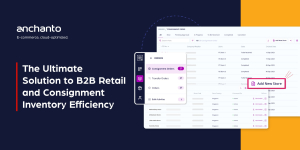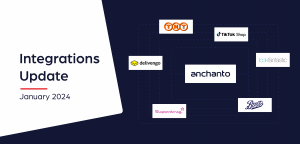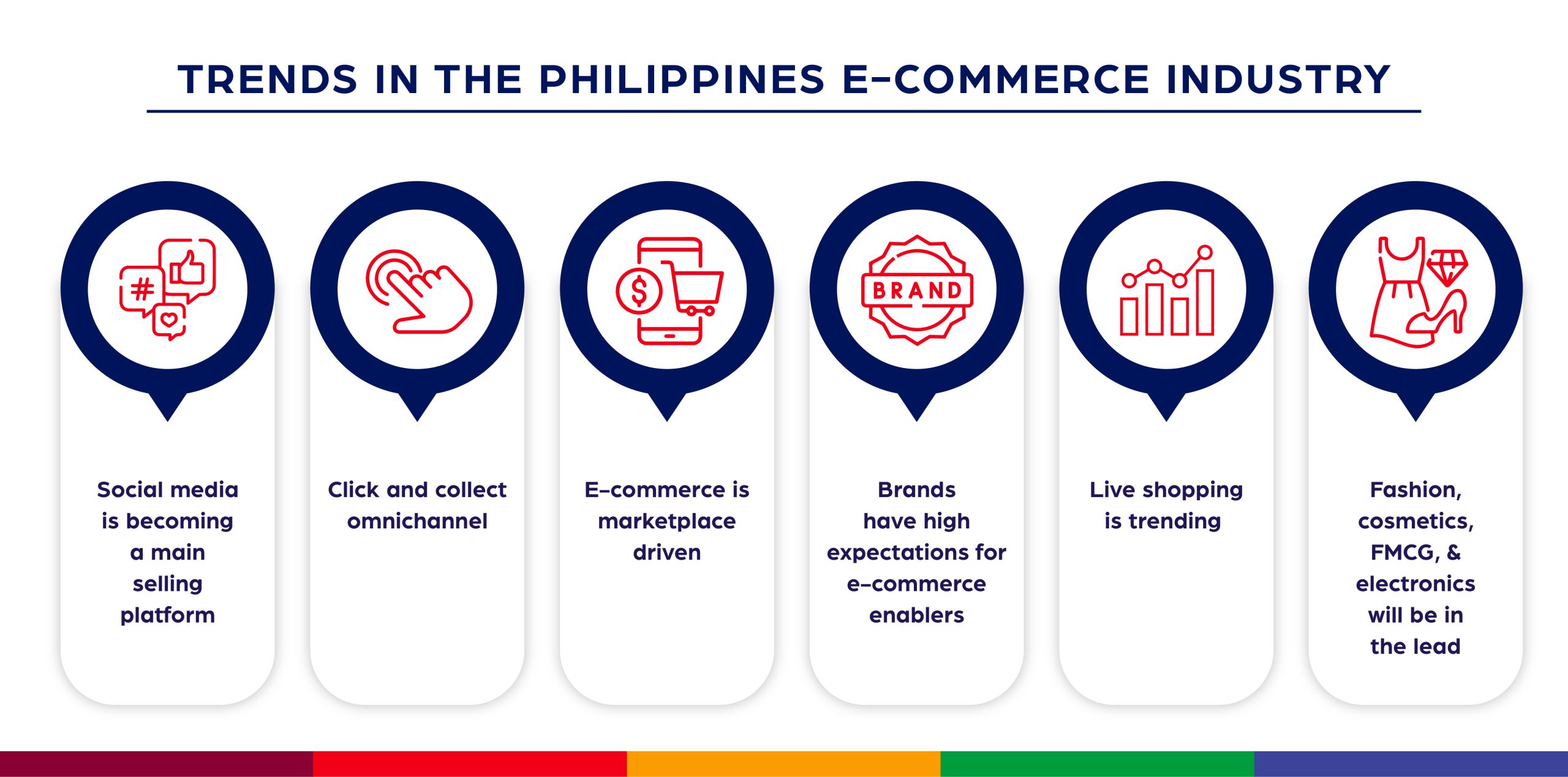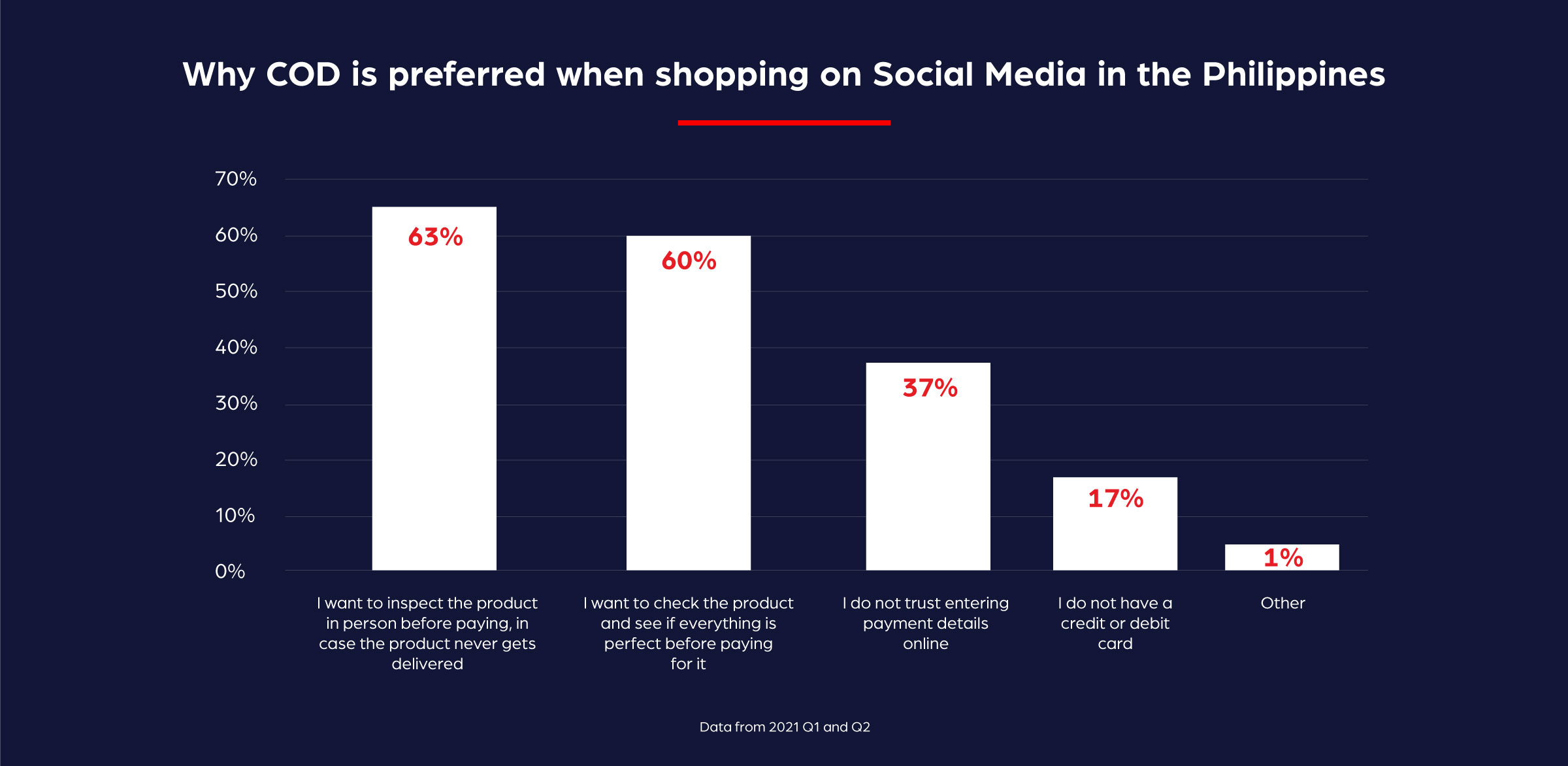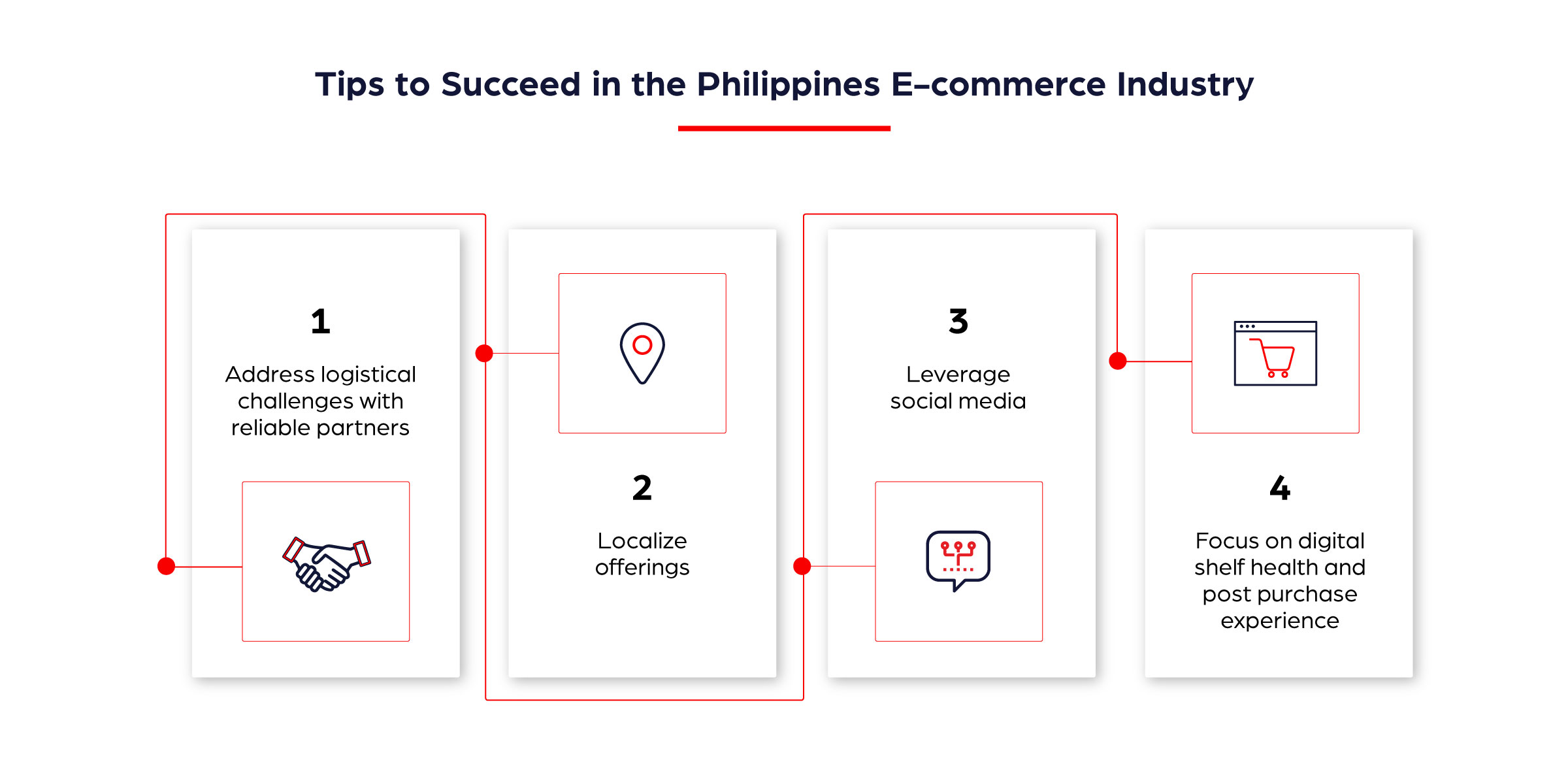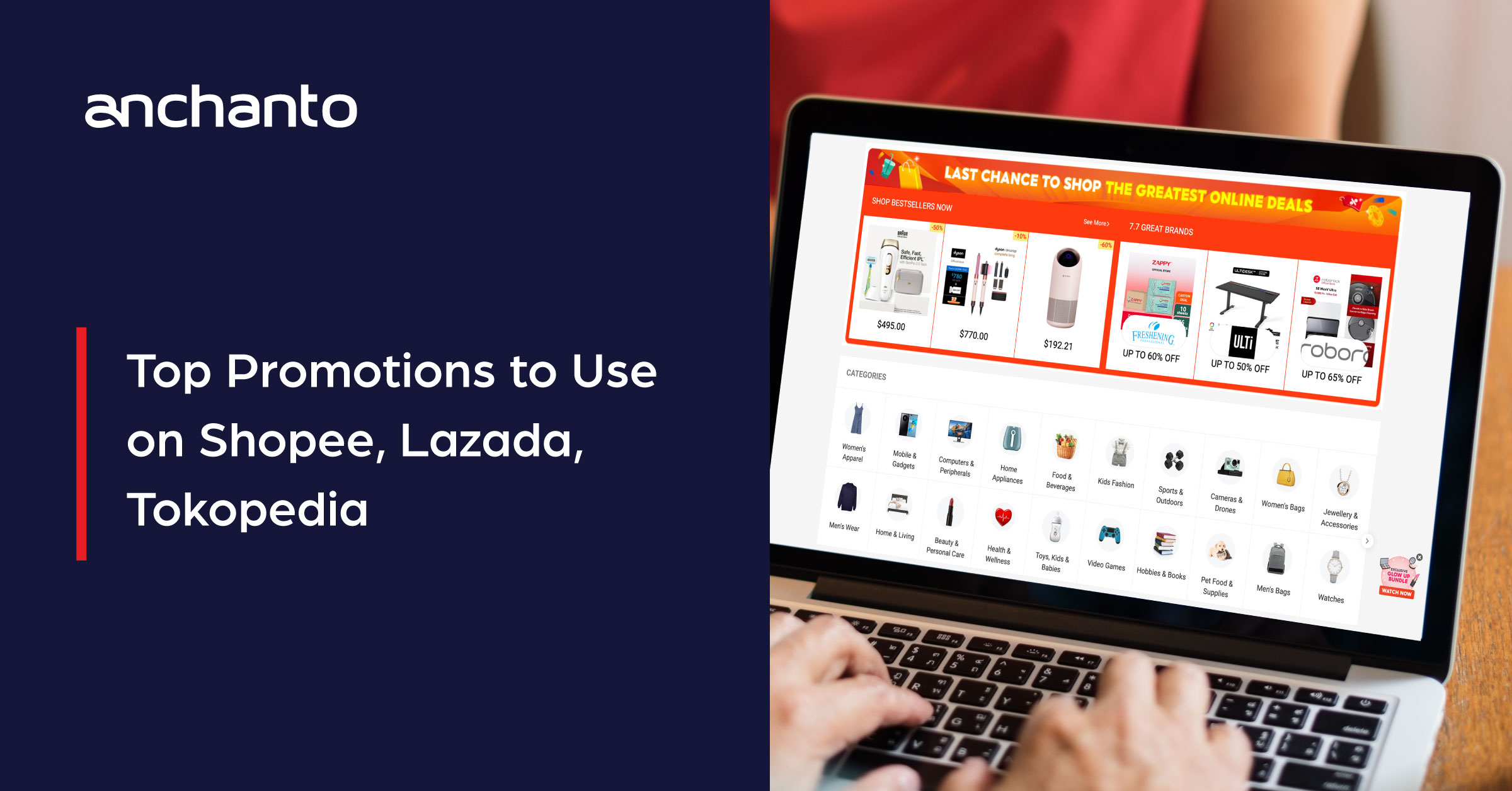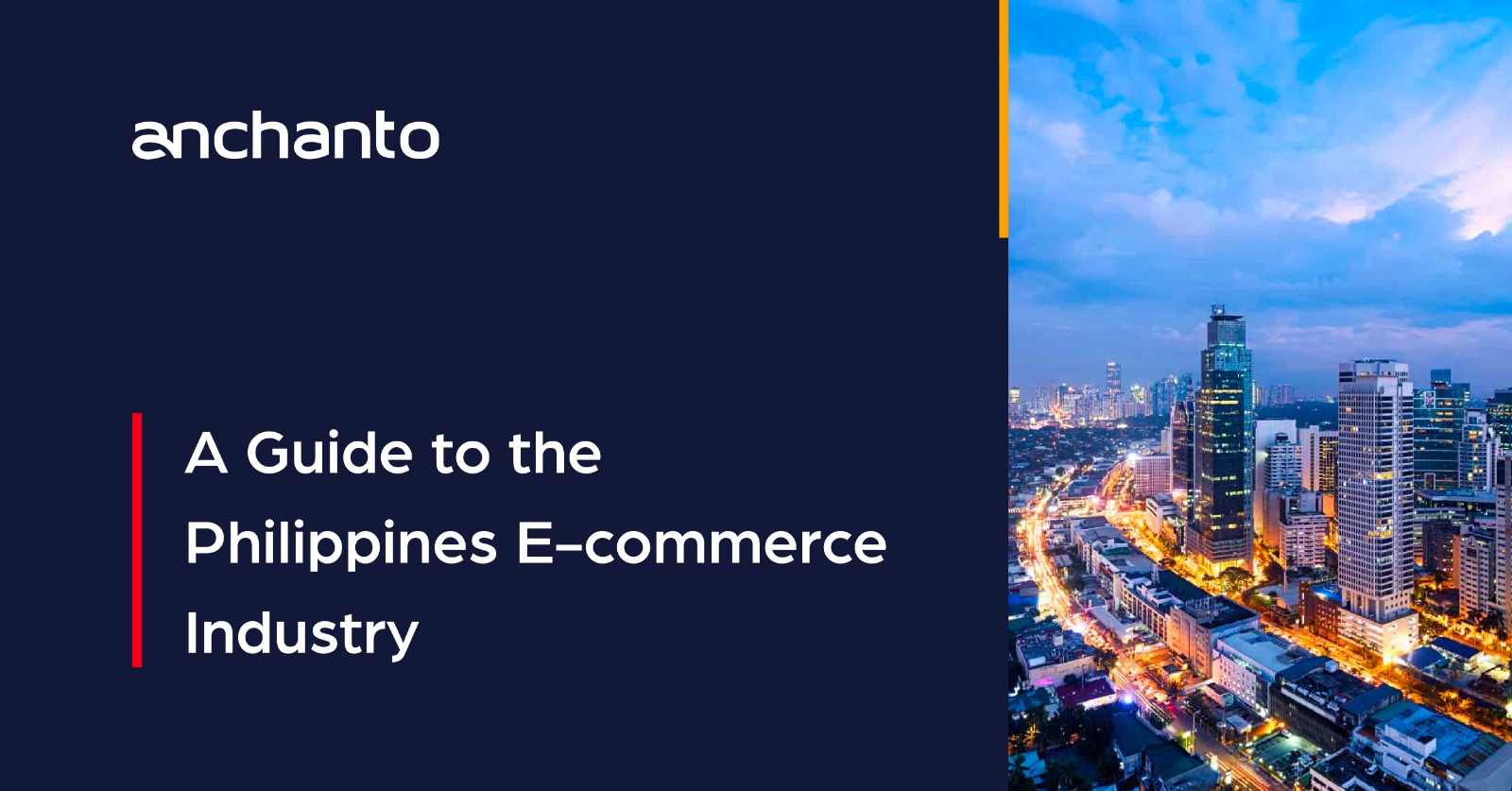
A Guide to the Philippines E-commerce Industry: All that You Need to Know
1. The Dynamic Landscape of the Philippines E-commerce Industry
According to market research, the Philippines is a fast-growing e-commerce market in Southeast Asia[1]. Revenue from online retail is expected to show an annual growth rate of 12.93% (CAGR between 2023 to 2027), which is expected to project a market volume of US$29.54 billion by 2027[2].
The Philippines is a rapidly growing market for e-commerce and presents a huge opportunity for businesses looking to expand their online presence.
But at the same time, this market is fragmented and ever changing. As a result, you need to keep up with the latest trends in the country’s e-commerce, top platforms and carriers to partner with, insider tips, and more.
To help you with this, we’ve put together a comprehensive guide to the Philippines e-commerce industry.
2. Trends in Philippines’ Online Retail Market
Adaptation is key to survival in the Filipino e-commerce market. In this section, we will dive into the ever-evolving world of Philippine’s e-commerce. From the unstoppable surge of social media commerce to the seamless integration of online and offline sales, we’ve covered all of the top trends to equip you with the knowledge you need.
a. Social media is becoming a main selling platform
Consumers in the Philippines are active social media users who spend nearly 10 hours per day[3], seven days a week on different social platforms. Filipino consumers use Facebook the most with 67 million active users on the platform. This is followed by YouTube (58.5 million active users), TikTok (43.4 million active users)[4], and Instagram (14 million active users).
Each of these platforms offers online shopping options, but lately, TikTok shop has taken the lead in social commerce. It is an easy way to set up shop and start selling your products to the millions of users on the platform. Moreover, TikTok Shop enables you to reach a large audience, increase brand awareness, and the potential to generate sales.
“The use of TikTok is rising quickly in the Philippines. A few months ago, after launching their business on TikTok shop, some of our clients in the region received 4,000+ orders from the platform on top of their combined 6,000 orders from Shopee and Lazada,” says Abhinandan Arkade, Senior Director of Product Management, Anchanto.
b. Click and collect omnichannel
The online and offline shopping experience is currently integrated through omnichannel strategies in the Philippines. This requires retailers to perform e-tail activities and accept the challenge to level up. In an attempt to do so many brands are offering click and collect options.
Click and collect is a form of e-commerce that allows consumers to buy products online and pick up these purchases themselves from a designated store, storage facility, or other location.
A few months ago, online pharmacy, Watsons launched its 1,000th store to offer a modern and stylish shopping environment. It also provides an immersive and interactive online and offline experience for customers. For their omnichannel initiative, they provide click-and-collect shopping[5]. Decathlon Philippines also encourages click-and-collect. To use this feature, consumers must become members for various benefits[6] like 365-day returns and refunds and a 2-year warranty. Homegrown businesses like SM Retail and Primer Group also provide click-and-collect.
c. E-commerce is marketplace driven
Shopping through online marketplaces is very popular in the Philippines. It’s the preferred means of buying online and according to SimilarWeb’s ranking[7], Shopee, Lazada, and Amazon are the top 3 e-commerce and shopping websites in the country (as of March 2023).
“Consumers in the Philippines also love e-commerce sales and comparing prices across different online marketplaces to find the best offers. This reinforces the need for brands to strengthen their presence on multiple channels and invest in unifying sales channels to bring coherency to the omnichannel experience,” says Abhinandan Arkade, Senior Director of Product Management, Anchanto.
d. Brands have high expectations for e-commerce enablers
Brands no longer want enablers to serve as their connection to online retail. The former expects enablers to be an extension of their team by caring about the final outcome, understanding the brand, and evolving based on expectations.
To provide an excellent shopping experience and offer brands relevant capabilities, enablers will need to invest in suitable tech infrastructure. That’s because they lack the means to provide brands flexibility, visibility, and end-to-end solutions.
“Many retail businesses are diverging into last-mile delivery and now fulfillment services too. To do this, they are acquiring warehouses to offer end-to-end fulfillment services. But, they need to be mindful of how they can make these services worth the money they’ve invested. Technology can provide them with the support they need,” suggests Abhinandan Arkade, Senior Director of Product Management, Anchanto.
e. Live shopping is trending
Filipino consumers are used to making purchase decisions after seeing items and testing them. This requirement is taken care of through live stream selling or live shopping. With live demonstrations of products, consumers feel they understand a product better.
Ninja Van Philippines claims that 47% of Filipino sellers conduct live sessions[8] daily in the region. More Filipino businesses also believe that live selling brings in new business as 74% say that attracting new customers is a top driver for conducting live selling. About 52% of Filipino sellers also say that live selling is more profitable than posting products on marketplaces and apps.
f. Fashion, cosmetics, food and beverages and consumer electronics will lead the industry
In the Philippines, the top online retail product categories[9] include:
- Fashion (65%)
- Beauty and personal care products (47%)
- Food and beverages (35%)
- Consumer electronics (34%)
The Philippines has been encouraging new companies in the fashion industry[10] to enter the country for years. As a result, several brands, local and international, have established themselves in the Philippines. Many of these brands have leveraged existing e-commerce platforms to expand their reach.
For instance, in January 2022, Zalora, an e-commerce platform, partnered with minimalist fashion brand COS to enter the Philippines fashion market after targeting Singapore and Malaysia with Zalora featuring exclusive availability of COS products.
3. Top E-commerce Marketplaces in the Philippines
As e-commerce in the Philippines has become increasingly popular in recent years, more and more consumers are turning to online marketplaces to buy and sell products. Here are some of the top marketplaces in the country and the unique features that make them attractive options for both buyers and sellers in the Philippine e-commerce market:
- Lazada: Lazada is one of the largest marketplaces across Southeast Asia with over 50 million active users. In 2016, the marketplace became the regional flagship of the Alibaba Group[11]. It is backed by Alibaba’s best-in-class technology infrastructure and serves 560 million consumers across the SEA region[12].
- Shopee: Shopee is present across 7+ markets, providing easy, secure, and fast online shopping experiences through strong payment and fulfillment support. The platform secured US$240.5 million globally in 2022[13] and the largest age group of visitors on the Philippines platform are 18 to 24 year olds (Desktop)[14].
- Amazon: The global marketplace receives a footfall of 5.2 billion visitors on a monthly basis. The largest age group of visitors on the platform includes 25 to 34 year olds (Desktop)[15]. In the Philippines, Amazon is one of the top 3 online marketplaces.
- Zalora: Zalora is one of the largest marketplaces across Southeast Asia with over 50 million active users. Its top product categories include fashion and beauty, sports, fitness, and more.
- eBay: The multinational e-commerce platform in the Philippines receives 699 thousand visitors on average per month[16]. The largest age group of visitors on the platform is 25 to 34 year olds (Desktop).
- BeautyMNL: The platform has a huge assortment of over 45,000 health, beauty, and lifestyle products. The largest age group of visitors on the platform are 25 to 34 year olds (Desktop)[17].
4. Top Last-Mile Carriers in the Philippines E-commerce Industry
When it comes to delivering goods to customers, last-mile carriers play a critical role. In the Philippines, there are several such companies that provide reliable and cost-effective logistics solutions. In this section, we will see some of the top last-mile carriers operating in the Philippines:
- J&T Express: J&T is a leading express delivery service backed by powerful technology. The company offers coverage across the Philippines and is operational 365 days a year. Users receive free-pickups and on-time deliveries.
- Ninjavan: The carrier offers affordable delivery services and is trusted by 2,000,000 businesses[18]. Ninjavan also provides international shipping, warehousing, fulfillment, and pickup and drop-off points.
- Entrego: The company supports fulfillment and logistics needs of businesses in the Philippines. Its services include Parcel Management for Corporate Solutions and logistics and fulfillment solutions for MSMEs nationwide.
- LBC: LBC is an express delivery and cargo shipping provider in the Philippines and is growing its network of over 6,400 locations, partners, and agents across 30 countries. The company aims to offer fast and reliable deliveries like 24-hour door-to-door delivery in the Philippines
- 2GO: The company has more than 1400 vehicles[19] of different sizes as part of its fleet. They also have multiple warehouses and hub facilities strategically located around the archipelago.
- XDE Logistics: The carrier owns 1000+ vehicles to serve its customers. The company moves over 4 million kilos of cargo across the country and is serving 15+ industries with 3000 accounts.
5. The Philippines E-commerce Industry Challenges
The Philippines has a rapidly growing e-commerce industry, but it is not without its challenges. From logistics and technology to payment methods and competition, businesses operating in this space must navigate several obstacles to succeed in this market. Let’s look at some of the biggest e-commerce challenges in the region:
a. Logistics can be tricky in the archipelagic country
As an archipelago, the Philippines relies on maritime transport to move goods within domestic and foreign markets. Road transport is used to move goods to and from ports and within each island. On account of this, the Philippines has the highest logistics cost[20] among member-states of the Association of Southeast Asian Nations (ASEAN).
The logistics market in the Philippines is also highly fragmented, with both domestic and international companies present. In some cases, you may find only specific delivery companies servicing selected areas. Juggling between different delivery partners can be challenging as well. Fortunately, technology is being tested to optimize the warehousing and logistics industry.
b. Limited awareness of useful SaaS technology
The technology landscape in the Philippines is constantly evolving, and many businesses are actively seeking out new solutions to improve their operations in e-commerce. However, identifying the ideal solution is challenging as there are different tech options available in the Philippines, but only a few providers have a local presence in the area. As a result, getting a full understanding of how they can help is difficult. The same goes for explaining different challenges to the solutions provider. This challenge becomes even more problematic with language barriers.
“Based on our interactions with many e-commerce brands and enablers in the Philippines, several businesses are still using legacy systems and these are not scalable. Retailers and brands are open to evolving however they are not aware of the right tools available in the market. They invest in custom-built tech solutions to achieve what they want. Some are still functioning through a manual approach until their volumes grow. However, customer demands and competition advance backend operations need to improve too to deliver success. So, relying non-scalable options no longer makes sense,” says Abhinandan Arkade, Senior Director of Product Management, Anchanto.
c. Difficulty monitoring competitor performance
Whether launching a business online in the Philippines, expanding beyond the Philippines, or entering the country’s retail market, knowing the competition is vital. Without the right means to check and compare your and your competitor’s performance, it is difficult to identify a winning strategy. Most businesses across the globe lack real-time data on their competitors to compare pricing, products, customer response, and sales. Those who do possess the means to do this experience difficulties like complicated data piles that are impossible to read and make quick decisions.
d. Cash on delivery is still the preferred payment method
A study found that 71% of online shoppers prefer cash on delivery (COD) in the Philippines[21] as their primary payment method. Even when using social commerce cash on delivery is the preferred option. The reasons for this include –
COD payments can be problematic for businesses as it takes longer to receive the payment. This means revenue calculation delays. If the order is cancelled while out for delivery, a cost occurs.
6. Tips to Succeed in the Philippines E-commerce Industry
As e-commerce continues to gain popularity in the Philippines, it’s essential to look for ways to succeed in this dynamic and competitive market. However, succeeding in the Philippines e-commerce industry can be challenging due to various factors as we’ve discussed. But these tips can help address the challenges and obtain success.
a. Address logistical challenges with reliable partners
As seen in the challenges, logistics can be a challenge in the Philippines due to the archipelagic nature of the country. So, partner with reputable logistics providers who can deliver to all areas of the country to help reduce this problem. Check if they have fulfillment centers across the country or your target areas in the country.
b. Localize offerings
The Philippines is a diverse country with varying cultural and language preferences, which makes it essential to localize your offerings with products that cater to local tastes and preferences. These can be introduced to the local market through e-commerce enablers. They will understand the local language, culture, and taste giving you an advantage in this market and the facilities to manage your e-commerce.
c. Leverage social media
In addition to diversifying your online presence on marketplaces, use social media platforms like Facebook, Instagram, and TikTok are highly popular in the Philippines. With many consumers using these channels to discover and purchase products, they are highly effective. Leverage social media by creating engaging content and running targeted ads to reach your target audience. Also integrate this channel into your e-commerce for better results.
d. Focus on digital shelf health and post purchase experience
In 2022, Anchanto recorded over 60 million product units sold by its customers in the Philippines. As more businesses join the local e-commerce landscape, preparations must be made to deal with the competition. For this, digital shelf health must be managed efficiently with the right data insights. Using advanced digital shelf health analytics can provide essential details about competitor performance, prices, products, and more, giving you a competitive edge.
Similarly, by focusing on the post purchase experience, you can improve your relationship with customers and build brand loyalty. Very often businesses rely on third-party logistics providers to give buyers parcel delivery updates. This interrupts the post purchase experience with your brand and reduces your chances of staying connected with the client and pushing them to buy more from you.
7. Advantages of Cross-Border Expansion
If you are thinking of expanding into the Philippines or from here to other nations, it is vital to know the potential available for your business. To help you with this, here are a few details to bear in mind:
Benefits of Venturing into the Philippines E-commerce Industry
The Filipino e-commerce industry has immense promise given the support from authorities, growing infrastructure, and the consumer market. Let’s look deeper into these aspects to see how they’re really helping e-commerce thrive within the country.
a. Support from the government
Recognizing the need to sustain the impressive e-commerce growth in the Philippines, government bodies are actively engaging with the industry. The DTI (Department of Trade and Industry) recently published an E-commerce Roadmap which spans from 2022 to 2030 [22].
Based on the roadmap, several factors were identified that will contribute to the success of the Philippines e-commerce industry. For instance:
- Enabling and accelerating digital transformation of MSMEs
- Increasing the number of e-commerce businesses in the country
- Ensure speed, enhance security, establish structure
- Provide budgetary support to fund e-commerce initiatives
- Promote cashless transactions and increase uptake of digital payments
b. A growing high-value market
The Philippines E-commerce Roadmap also points out that there is a new market forming with young and digital-ready consumers. The middle-class segment is also growing with increasing purchasing power. This presents a great opportunity with immense potential for businesses starting out in the Philippines’ e-commerce industry.
c. Continuously improving logistics network
While the Philippines will continue to be an archipelagic nation, its logistics network is expected to improve bridging geographical gaps. As discussed, many businesses are launching fulfillment services by setting up warehouses across the country. With these facilities in place, e-commerce parcels can be transferred from warehouse to warehouse and clubbed together for deliveries in the same locality. This will help cut costs. Moreover, the rising competition among fulfillment providers will help regulate costs.
Benefits of Venturing into Foreign Online Markets for Filipino Businesses
Beyond the Philippines, there are many markets within the Southeast Asian region with great e-commerce potential. If you’re considering expanding your retail business, here’s why these foreign online markets make sense.
a. Increased market reach
By selling products online in other countries, you can expand your customer base beyond the Philippines, allowing you to reach a global audience and potentially increase sales. Diversifying your customer base can also reduce reliance on a single market. This can help protect against economic downturns and other risks that may affect the Philippine market.
b. Access to new business opportunities
Cross-border e-commerce can also provide opportunities for your Filipino business to enter into new partnerships and collaborations with companies from around the world. This can help expand your product offerings, improve your supply chain, and access new sources of capital.
c. Improved competitiveness
By expanding your market reach through cross-border e-commerce, you can improve your competitiveness. There is a lot to learn from larger international players. Going up against them can expose you to new ideas and concepts that you can introduce to your business in the Philippines and other locations.
8. Time to Prepare
In this article, we’ve covered several aspects of the Philippines e-commerce industry including the current trends, top marketplaces, logistics providers, and more. We’ve even listed tips to help you succeed in the local online market along with the potential it offers foreign businesses.
Now, regardless of where you’re from or where you decide to expand your e-commerce to, ensure you:
- Research and understand your market and target audience
- Partner with businesses to leverage services, connections, and local market knowledge
- Look at the challenges and identify solutions
- Support your e-commerce with technology to simplify your multi-channel selling and backend operations
Looking to grow your business in the Philippines?
Reach out to one of our e-commerce experts to get answers to all your questions.
References – 1, 2, 3, 4, 5, 6, 7, 8, 9, 10, 11, 12, 13, 14, 15, 16, 17, 18, 19, 20, 21, 22
